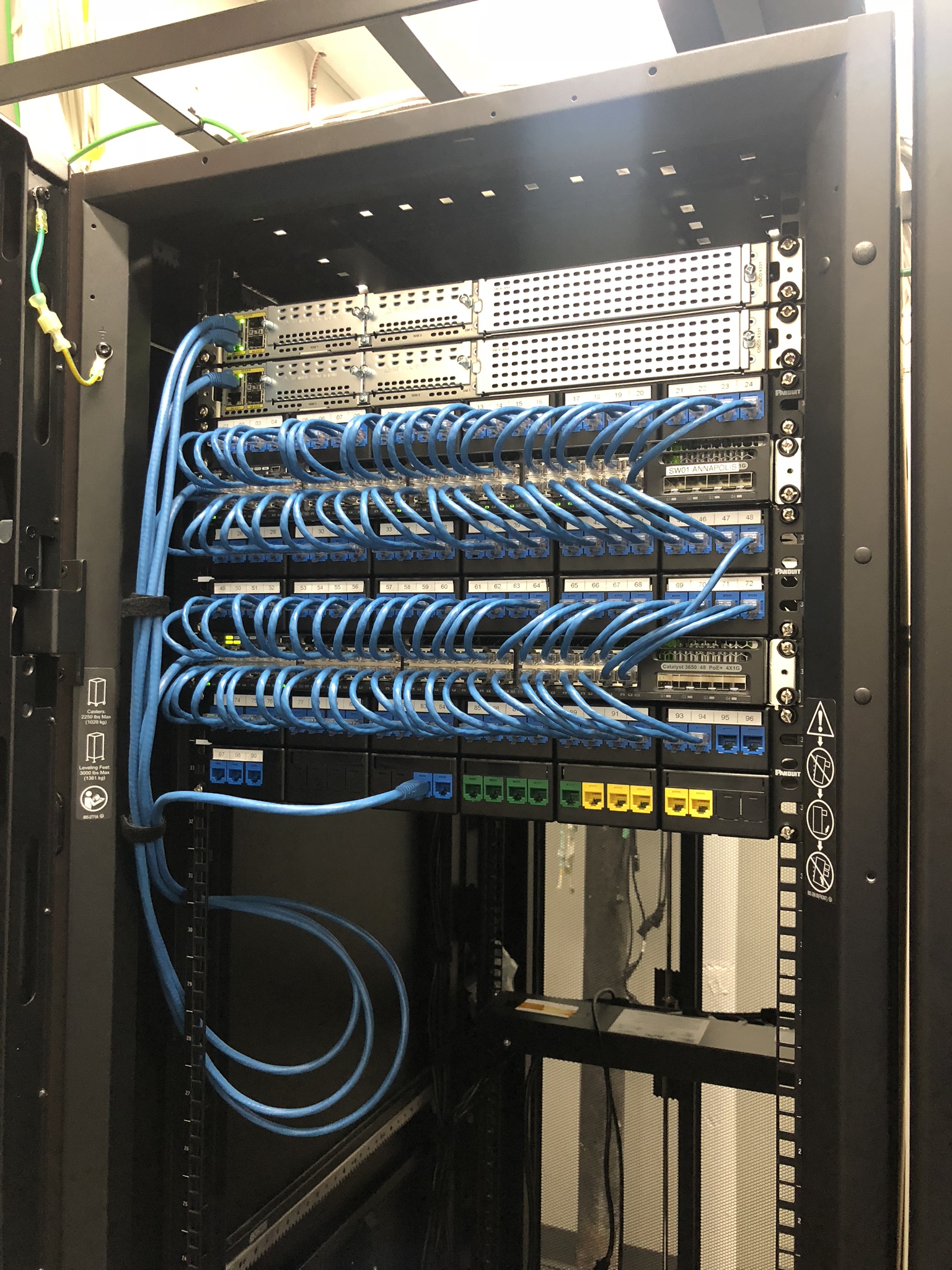
- BTC strictly adheres to all industry standards, including: ANSI/TIA-568, BICSI, local NEC codes, OSHA safety regulations, etc...
- Quality Beyond Compare: BTC's Distinctive Attention to Detail Sets Us Apart
- Lifetime Warranty and Passionate Commitment: We Care Beyond Measure
- Swift Agility, Robust Capacity: Handling Any Job with Precision
- Precision at First Try, Competitive Pricing Every Time.
STRUCTURED CABLING
What Is Structured Cabling?
Structured cabling is more than just a network of cables; it’s a strategic foundation that unifies an organization’s communication infrastructure. By organizing and standardizing cabling systems, structured cabling ensures a scalable and adaptable network that can accommodate evolving technologies. This approach integrates various elements such as voice and data cabling, fiber optics, audio-visual components, and access control systems to create a holistic and future-proof solution.
Importance Across Industries:
In an era where digital connectivity is paramount, structured cabling plays a pivotal role across diverse industries. From healthcare and finance to education and manufacturing, organizations rely on structured cabling for seamless communication, data transfer, and collaboration. The benefits extend beyond efficiency; structured cabling enhances reliability, reduces downtime, and simplifies maintenance, resulting in a network infrastructure that aligns with the dynamic needs of modern businesses.
Key Elements of ANSI/TIA-568 Standards:
Cabling Components: ANSI/TIA-568 outlines specifications for various cabling components, including cables, connectors, and patch panels. This ensures compatibility and interoperability, enabling seamless integration within structured cabling systems.
Categories of Cabling: The standards classify cabling into categories, such as Cat 5e, Cat 6, and Cat 6a, each designed to meet specific performance criteria. This categorization guides the selection and installation of cabling based on the intended application and data transfer requirements.
Performance Parameters: ANSI/TIA-568 establishes performance parameters for cabling, including signal attenuation, crosstalk, and return loss. By setting these benchmarks, the standards guarantee reliable and high-performance data transmission across the network.
Structured Cabling Architecture: The standards promote a structured cabling approach, ensuring a systematic and organized network infrastructure. This methodology facilitates scalability, adaptability, and simplifies future upgrades or modifications to the cabling system.
